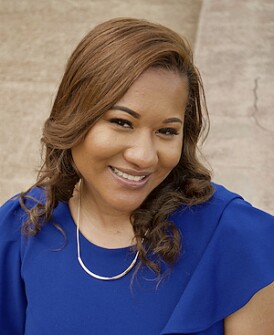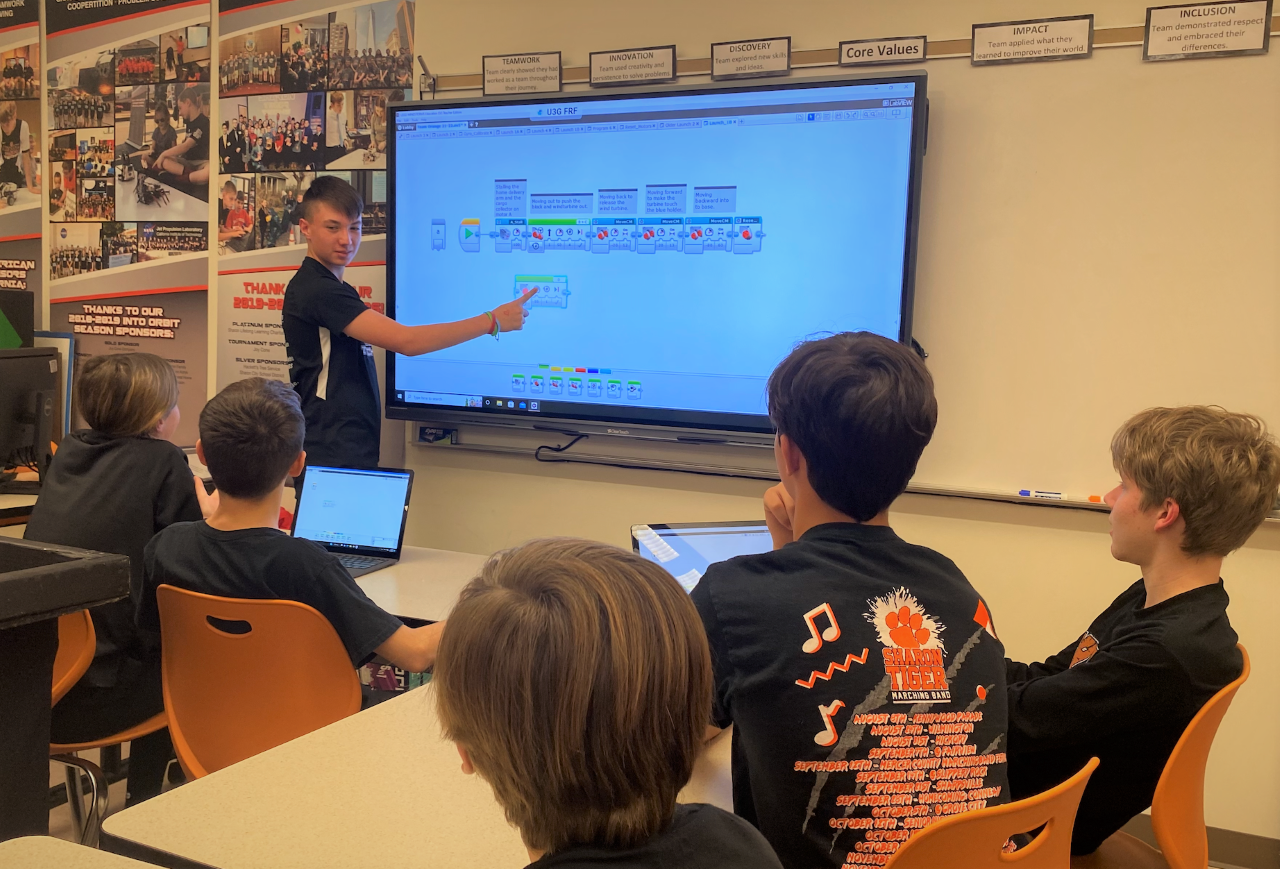Table of Contents
Patricia Brown began her function as director of expertise for the Ladue faculty district in Missouri in July and already has huge concepts on the best way to successfully use expertise within the classroom.
“I do consider we now have this chance to essentially have a look at our methods, at what we’ve been offering educationally for our college students and for our academics and for our dad and mom—our group as a complete, all of the stakeholders,” Brown mentioned. It’s time to “problem among the issues which have all the time been” and take into consideration how colleges can enhance training for all children.
Brown just isn’t new to the ed-tech area. For 11 years, she was the academic expertise coordinator for the 4,300-student faculty district. And he or she’s at present a board member for the nonprofit Worldwide Society for Expertise in Training.
In her 21-year profession, she’s racked up awards for her work as a expertise integration specialist: She earned the Ladue faculty district’s Excellence in Training award in 2021, was a part of the Apple Distinguished Educators class of 2019, was one of many Nationwide College Board Affiliation’s 20 to Watch academic expertise leaders in 2016, and has been named one of many high ed-tech influencers by EdTech Digest in 5 totally different years.
Right here’s what she needed to say in a Zoom dialog with Training Week about what’s subsequent for expertise use within the classroom, what the largest tech challenges are for colleges, and what her priorities are in her first yr as tech director for Ladue.
The next interview has been edited for brevity and readability.

What’s your philosophy on the subject of utilizing expertise within the classroom?
For a very long time—particularly early on, after we had been first adopting using expertise—it was all the time about that “wow,” that cool factor you are able to do. I keep in mind pondering across the time after we first adopted iPads, and it was all the time the entire mantra: ‘There’s an app for that.’ We had been simply pulling so many assets, so many instruments, so many apps, the place it was utterly overwhelming for a instructor. So I began to consider what can we truly need college students to do with the expertise? What can expertise do? The place can it take us? The place can we offer these alternatives for our children to be creators and producers and demanding thinkers and never simply customers of expertise?
For me, after I’m utilizing expertise with my college students, it isn’t an add-on. It’s not only a cool factor that you just do. It’s built-in within the classroom, the place it’s part of the curriculum and it’s part of the training course of. We be taught with expertise, we be taught via expertise, we permit it to offer alternatives that we wouldn’t have [had] earlier than.
As arduous as these final three years have been on the academic system, I do consider it has created alternatives for us to offer a stage of engagement for our college students that we have not had earlier than.
Patricia Brown
Fairness is an enormous a part of my philosophy. I really feel like after we’re using expertise as only a consumption software, we’re offering inequity for our college students. The actual aim is to offer these alternatives the place they will invent, they will create, they will produce, they will join and talk with individuals exterior of the 4 partitions of their school rooms. That’s a very highly effective factor that we’ve discovered via COVID. As arduous as these final three years have been on the academic system, I do consider it has created alternatives for us to offer a stage of engagement for our college students that we haven’t had earlier than.
I do know that each pupil doesn’t be taught the identical manner, however what expertise permits us to do is to distinguish [and] present these totally different alternatives for our college students. It permits academics to have a extra environment friendly manner for them to grade papers, for them to roll out curriculum, for them to work together with their college students, for them to create extra progressive initiatives.
Faculties proceed to push expertise use to the subsequent stage. What does that imply for training? The place can we go from right here?
What we’re left with, as we journey via this pandemic, is we have now a technology of scholars who’re very totally different from the pre-COVID instances, which means their stage of engagement is one thing that we battle to maintain in step with what we’re doing as educators. So one of many important issues that’s going to shift within the training format is the concentrate on pupil engagement, but in addition the concentrate on stability—the way you stability using expertise in school rooms and the quantity of assets and media and “distractions” that exist now with having a pupil to focus.
In relation to expertise, I don’t assume it’s going to be extra expertise. I believe it’s going to be: Let’s have a look at what we have already got. Let’s have a look at how we are able to make the most of these assets to the best potential and what we are able to create from what we have now. Video goes to be an enormous a part of that, for college kids to have the ability to present what they know in additional distinctive and artistic methods.
You’re going to have a look at different methods you could interact—even studying administration methods and utilizing other ways for college kids to show in assignments. You’re going to have some non-traditional school rooms.
I believe it’s going to be extra of a personalized manner of offering training for our college students as a result of I do assume we have now totally different children now, so we have now to satisfy their wants.
What are the largest tech challenges that colleges are going through proper now?
One of many largest tech challenges that the majority colleges are going through continues to be combating offering the assets for college kids and for academics.
What we’re affected by now could be digital burnout. I’m truly doing a examine and dealing on my doctorate, so one of many issues I needed to know is: Academics’ and educators’ expertise in COVID, did it construct confidence of their use of expertise? And are they utilizing expertise extra effectively and extra incessantly in our school rooms due to COVID?
The reply is sure and no.
Sure, there’s extra confidence of their use of expertise. I believe academics are extra prepared to take some dangers. [But there’s] a sure group of academics the place they’re like, “I don’t need something to do with that as a result of these final two years had been arduous, so I wish to take a break from expertise and I actually simply wish to return to fundamentals.”
So I believe the problem for training goes to be to seek out that stability: How do we all know when to make use of expertise and the way do we all know when we have to return to fundamentals?
How do you tackle tech burnout amongst academics?
It’s been a problem as a result of as a tech individual, a tech coordinator, to now a tech director, in fact, expertise is all the time on the forefront of my thoughts and it’s my job. Nonetheless, I’m very linked with my human aspect as effectively, as a instructor, as an educator, as a mother or father, and I all the time have a look at views and totally different lenses. I get all the way down to the why. Not “oh, they only don’t use expertise,” and go away it at that. What’s the root of the issue? Is it as a result of they’re burnt out as a result of every thing they’ve tried to make use of doesn’t work that day, and it’s simply irritating? Or is it that they’ve been utilizing this software nonstop and wish to do one thing totally different however don’t know what to do? Simply asking these proper questions, asking these whys.
In fact, you’re all the time going to have some people who find themselves completely anti-tech. However typically, attending to the basis of the why is all the time useful for me as a result of then I can say, “OK, I’ve a advice. Let’s do this.”
Skilled studying is so necessary. I’m a proponent of getting distinctive ways in which academics obtain skilled studying. I like to do lunch and be taught, the place I simply invite academics in for a 15-minute or 20-minute drop-in the place I’m going to show them one thing new, however they’re bringing their lunch and so they’re chit-chatting or speaking and asking questions, and it’s simply a casual manner. Playdates: I’ve had academics go to the Apple Retailer and simply type of mess around with the expertise and be taught that manner. Children wish to be taught via play. Academics do, too.
What ought to high quality expertise use seem like? And what ought to it not seem like?
I’ll begin with what it doesn’t seem like. It doesn’t seem like children sitting on their gadgets, not interacting with one another in any respect; engaged on a drilling apply app, the place they’re training their math abilities, and that’s just about all they do; or they’re utilizing their expertise for testing functions solely and the one time they bring about out the expertise is after they’re on the brink of take a take a look at or they should do an task that’s unbiased.
What it appears to be like like is trying on the curriculum and discovering pure methods to combine expertise. Not taking the expertise after which attempting to suit the curriculum in, however as a substitute taking that curriculum and taking a look at a unique manner that I may instruct my college students—I’m going to make use of the expertise to create a very participating slide deck to interact my children. I’m going to embed some movies. I wish to embed some GIFs into my slide deck. I wish to add Nearpod. I’m going so as to add some interactive parts as I’m instructing or lecturing my college students.
[Quality technology use] would not seem like children sitting on their gadgets, not interacting with one another in any respect.
Patricia Brown
As soon as the scholars are instructed and so they get the knowledge that they want from you as an teacher, how do they apply that data? Are they in a position to take that data and create a video? Are they working collaboratively with a companion or group in designing a STEM problem that integrates with what they’re studying in science? Are they occurring an array hunt as a result of they’re studying about arrays in math class, so that they’re strolling round their faculty with their iPads taking footage of pure arrays that they see across the constructing? Are they making a stop-motion video of the change of states of matter?
How do they apply [the learning]? Are they creating, producing, growing issues? Are they in a position to take the data that they’ve and use it in a pure manner?
How ought to ed-tech leaders decide which tech instruments keep and which of them go?
It actually is determined by the demographics of your college students, your funds, what you’ve obtainable. It actually comes all the way down to what works for you, what works on your district, what are the challenges that you’ve got, and what expertise assets and instruments might be that answer for you.
I do assume it is extremely necessary to be proactive in ensuring that you just’re staying abreast with the brand new issues which are created which are serving to to make studying extra accessible and possible.
We in our district have Apple gadgets, which I completely love, however we even have Chromebooks that we additionally love, and so they match our goal and our wants. So I simply actually assume it comes all the way down to evaluating what your wants are within the district, taking a look at your funds.
[When it comes to the budget] generally districts permit their budgets to dictate the kind of assets and expertise that they’ve, when actually I believe it ought to be extra of: Let’s consider what’s the most effective software and the most effective useful resource for our district, after which let’s discover a solution to pay for it.
I believe that it’s necessary to proceed to make use of assets which are going to open up alternatives for our college students to collaborate, to attach, to create, and share. So no matter that software appears to be like like for you, I say, use it.
What are your largest priorities this faculty yr?
One is information privateness and safety, ensuring that every one of our information is safe. There are plenty of issues occurring on the planet proper now and not-so-honest people who find themselves focusing on totally different districts, in order that’s primary precedence.
The opposite priorities I’ve are ensuring there are methods and processes in place for using expertise all through the district. One cool factor is, taking over this function, I had the chance to hitch within the curriculum and instruction division. Expertise is now part of curriculum and instruction, which is an ideal marriage to me as a result of it permits [technology] to be part of the conversations that occur in curriculum, and curriculum to be part of the conversations that occur in tech. We’re working collaboratively for a similar aim, and we’re ensuring that our college students and our academics are educated concerning the assets which are obtainable. So my precedence is ensuring that this course of and the seamlessness of the wedding between curriculum and expertise occur as finest as they will.
Innovation can also be one other precedence, ensuring that we’re pushing the needle and pushing our college students and our academics to be future prepared; ensuring that the coaching and the assets and the expertise that we’re utilizing is state-of-the-art, updated, obtainable, and prepared for all of our college students and our academics.




